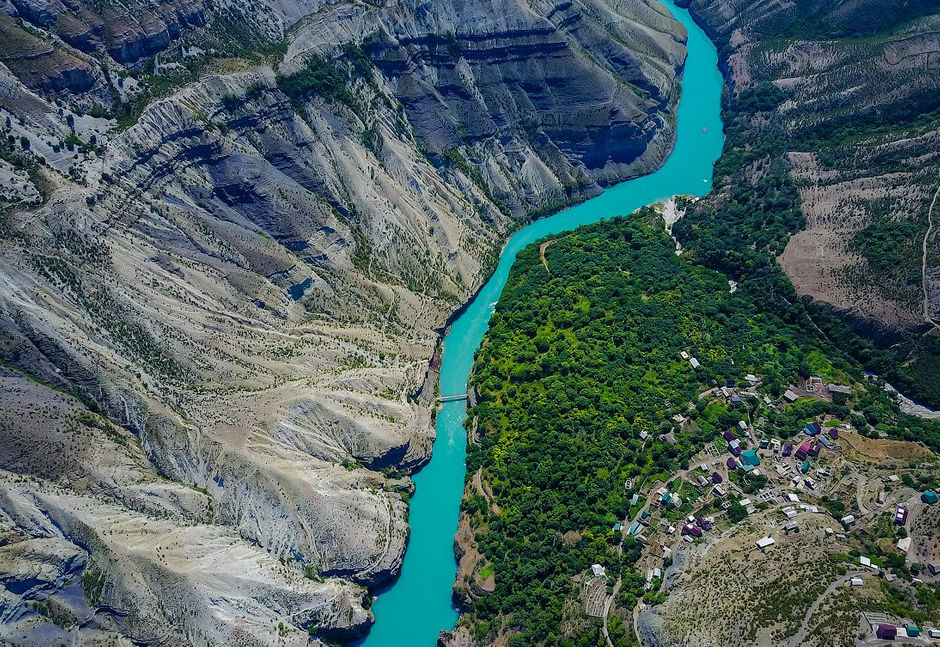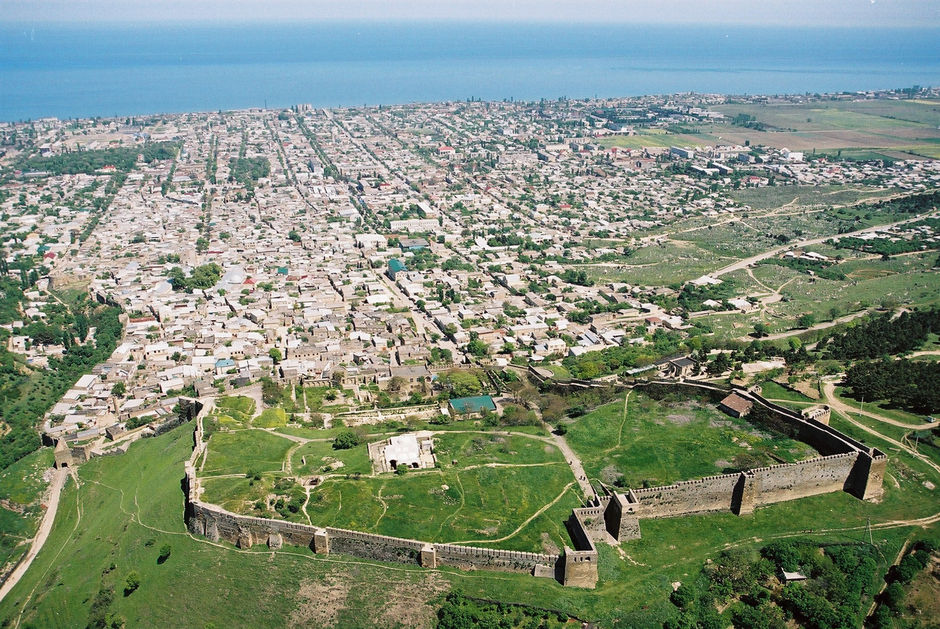Dagestan, located in the mountains of the North Caucasus, on the shores of the Caspian Sea, is home to almost three million people. The name of the republic is translated from Turkic as "Country of mountains" ("dag" - mountain, "stan" - country). The most beautiful places in Dagestan are associated not only with the mountains, but also with the picturesque coast of the Caspian Sea and the plains in the northeast.
Dagestan covers an area of more than 50 thousand square meters. km. The territory of the republic covers most of the Caspian lowland, as well as the mountains and foothills of the Greater Caucasus. The highest point is Mount Bazarduzu, 4466 m. Other serious peaks of Dagestan, whose height is more than 4 thousand meters, are the Snegovaya ridge together with the Diklosmta peak, the Addala-Shukhgelmeer peak, the mountain.
Dyultydag
More than 6 thousand rivers flow through the territory of Dagestan, about a hundred of them are over 25 km long. The largest are Terek, Sulak, Samur with tributaries. All of them belong to the Caspian Sea basin. Many waterways originate high in the mountains and carry their streams into the sea.

Picturesque Dagestan, without exaggeration, can be called a huge open-air museum. There are many natural monuments, including 306 sites, of which 26 are under federal and regional protection, and some are included in the UNESCO World Heritage List.
The most beautiful places in Dagestan are located in popular locations, where numerous tourist routes are laid. Mountain auls are unique settlements with a rich history stretching back millennia.
In addition to natural diversity, this region is also unique in ethnocultural terms. The relative isolation of the republic contributed to the preservation of the national traditions of the indigenous ethnic groups. More than 40 nationalities live here, speaking twelve dialects of Turkish, Nakho-Dagestan and Iranian languages. Although Russians make up only 4.7% of the total population, the official language in Dagestan is Russian.
Makhachkala
The main attractions of Makhachkala, with a population of 600 thousand people, include the largest mosque in Russia, the Central Bazaar, Lenin Square, the Caspian Sea embankment, the Avar Theater, the Dagestan Museum of Fine Arts, the Great Patriotic War Memorial, the Kumyk Theater and many historical buildings and monuments.
The capital of Dagestan is unique. The city is distinguished by its original appearance, in which everything is harmonious - mosques, shopping centers, historical and modern mansions, monumental buildings and spectacular places. Modern conceptual structures are housed among 19th century mansions, giving this coastal town a unique character.
Makhachkala is quite noisy. More than 35 languages are spoken here, and everyone wants to be heard. The city is quite lively and at night - there are many fashionable restaurants, nightclubs where you can relax and taste national cuisine.
Juma Mosque is one of the largest cathedral mosques not only in Russia, but throughout Europe, located in the very heart of the Dagestan capital. The stunning structure of the Islamic religious cult can be seen from afar due to its scale. The spiritual center is capable of simultaneously accommodating more than 17 thousand believers.
The history of the mosque began in 734, built by order of the Arab commander Abu Muslim. At that time, it was the largest structure in the country of mountains. After the completion of the construction of the magnificent building, there were already 7 temples in the city, but Juma became the main cathedral mosque. Here the inhabitants of the city performed all the festive services. The building has been perfectly preserved.

The building was rebuilt and modified several times. When the sanctuary was closed, it housed a prison. During the Great Patriotic War, the mosque was returned to believers. For a long time it was restored at the expense of Muslims.
Plane trees have been planted around Juma. They grow here for a reason, plants draw excess moisture from the ground, so the walls in the temple are always dry, there is no fungus and dampness. Some trees are around 1000 years old.
The building is built in the style of restrained Islamic architecture, no frills and luxury. The only decoration is beautiful columns, arched windows and doors. The interior decoration is also modest and discreet: small lamps, hand-woven carpets on the floor. The walls contain valuable relics - holy books and ancient rosary.
Calls to prayer are heard from the high minaret towers every day, and they are distributed throughout the city.
Plane trees have been planted around Juma. They grow here for a reason, plants draw excess moisture from the ground, so the walls in the temple are always dry, there is no fungus and dampness. Some trees are around 1000 years old.
The building is built in the style of restrained Islamic architecture, no frills and luxury. The only decoration is beautiful columns, arched windows and doors. The interior decoration is also modest and discreet: small lamps, hand-woven carpets on the floor. The walls contain valuable relics - holy books and ancient rosary.
Calls to prayer are heard from the high minaret towers every day, and they are distributed throughout the city.
Derbent
Derbent is inhabited by Lezghins, Tabasaran and Azerbaijanis. Here tourists are delighted with handicrafts, skilful multi-colored slippers and jugs, created using a unique technology. Those who wish can try their talents in carpet weaving, traditional for Dagestan.
In 2003, UNESCO included 3 architectural masterpieces of Derbent on the World Cultural Heritage List:

The city defensive wall of Derbent, which is a double wall, built during the Sassanid period, which went far into the sea and formed a harbor. This unique monument of Derbent is the only surviving example of ancient Persian architecture in Dagestan.
Derbent Juma Mosque is the oldest sanctuary throughout Russia. The building, once a temple, was taken over by the Arabs and turned into a mosque. This explains why the entrance is from the south and not from the north.
The famous Naryn-Kala fortress was built in the 8th century. It is located on a picturesque hill near the Caspian Sea. The fortress was erected in order to close the ground passage to the Persians, and to secure the Dagestan land as much as possible. The total area occupied by the ancient citadel is about 5 hectares. The fortress has no definite, characteristic features, since it was completed by the rulers of different reigning dynasties. The structure was erected from durable natural stone, which was mined in Dagestan. The citadel is surrounded by double thick walls that reliably protected it from enemy raids. The Derbent Fortress is the most powerful ancient fortification in the world. Inside you can see well-preserved baths, water reservoirs in case of siege and the
ruins of old buildings.



